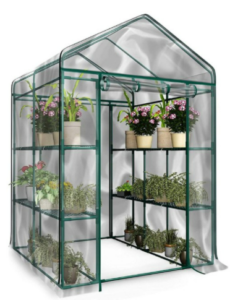Research Note regarding the President’s Cancer Panel.
 The President’s Cancer Panel dedicated the last two years to examining the impact of environmental factors on cancer risk. The Panel has just released an extensive report on their findings, which include eye-opening recommendations for individuals, such as giving preference to organic food, checking radon levels in the home and microwaving food in glass containers rather than plastic. Although many of us have read similar recommendations and warnings, it is important to highlight that this report emerges from mainstream scientific and medical thinking, the President’s Cancer Panel, a panel of three experts who review the U.S. cancer program and report directly to the President.
The President’s Cancer Panel dedicated the last two years to examining the impact of environmental factors on cancer risk. The Panel has just released an extensive report on their findings, which include eye-opening recommendations for individuals, such as giving preference to organic food, checking radon levels in the home and microwaving food in glass containers rather than plastic. Although many of us have read similar recommendations and warnings, it is important to highlight that this report emerges from mainstream scientific and medical thinking, the President’s Cancer Panel, a panel of three experts who review the U.S. cancer program and report directly to the President.
“Most of what we know about cancer is based on studies of non-Hispanic white people, but by the middle of the century that group will be only 38 percent of the population,” said panel member Margaret L. Kripke, a professor emerita of immunology at the University of Texas M.D. Anderson Cancer Center in Houston. “We need more data on cancer among minority populations so that we can begin to implement specific preventive measures.”
The report recommends more research into sociological factors that may explain disparities in cancer mortality among minorities.
“There have been a lot of studies in recent years trying to understand genetic differences associated with cancer susceptibility, but there are also cultural factors that can affect cancer mortality,” said Kripke. “In some cultures, people are so afraid of a cancer diagnosis that they don’t seek treatment until it’s very late.”
Current cancer screening guidelines should be evaluated, the panel noted, “to determine their accuracy in assessing disease burden in diverse populations.”
“One-size-fits-all screening guidelines don’t work,” Kripke said. “For example, the breast cancer screening guidelines have been loosened up so that women can start having mammograms later and may be screened less often, but we know that there is an early age of onset of breast cancer among Latino populations, and so if you change the guidelines based on the majority of people, these women will be left out.”
Another recommendation is that “cultural competency” become an integral part of medical school as well as continuing education for all health-care providers and administrative staff.
Dr. Otis W. Brawley, chief medical officer of the American Cancer Society, praised the report, and said it “hit all the right points.”
Another statistic that I found staggering and scary is that approximately 41 percent of Americans will be diagnosed with cancer at some point in their lives, and about 21 percent of us will die from cancer. The Presidential Panel noted cancers are becoming more common, particularly in children, and the proliferation of chemicals in water, foods, air and household products is widely suspected as a factor according to the Panel. I’m glad to see that the Panel recognizes that there is a link between cancers and chemicals – I intuitively knew that there had to be a connection as I’ve witnessed friends and family having to deal with childhood and young adult cancers. Thirty or forty years ago, you rarely heard of a child with cancer (or severe food allergies for that matter). With the growing body of evidence linking environmental exposures to cancer, the public is becoming increasingly aware of the unacceptable burden of cancer resulting from environmental and occupational exposures that could have been prevented.
What Individuals Can Do: Excerpts from the Presidential Panel’s Recommendations.
Individuals can take important steps in their own lives to reduce their exposure to environmental elements that increase risk for cancer and other diseases. And collectively, individual small actions can drastically reduce the number and levels of environmental contaminants.
Children
· It is vitally important to recognize that children are far more susceptible to damage from environmental carcinogens and endocrine-disrupting compounds than adults. To the extent possible, parents and child care providers should choose foods, house and garden products, play spaces, toys, medicines, and medical tests that will minimize children’s exposure to toxics. Particularly when pregnant and when children are small, choose foods, toys and garden products with fewer endocrine disruptors or other toxins. (Information about products is at www.cosmeticsdatabase.com or www.healthystuff.org)
Chemical Exposures
Individuals and families have many opportunities to reduce or eliminate chemical exposures. For example…
· Removing shoes before entering the home and washing work clothes separately from the other family laundry.
· Filtering home tap or well water… Unless the home water source is known to be contaminated, it is preferable to use filtered tap water instead of commercially bottled water.
· Storing and carrying water in stainless steel, glass, or BPA- and phthalate-free containers.
· Microwaving food and beverages in ceramic or glass instead of plastic containers.
· Choosing, to the extent possible, food grown without pesticides or chemical fertilizers and washing conventionally grown produce to remove residues…
· Exposure to antibiotics, growth hormones, and toxic run-off from livestock feed lots can be minimized by eating free-range meat raised without these medications if it is available. Avoiding or minimizing consumption of processed, charred, and well-done meats.
· Properly disposing of pharmaceuticals, household chemicals, paints, and other materials.
· Choose products made with non-toxic substances or environmentally safe chemicals.
· Reducing or ceasing landscaping pesticide and fertilizer use will help keep these chemicals from contaminating drinking water supplies.
· Turning off lights and electrical devices when not in use reduces exposure to petroleum combustion by-products because doing so reduces the need for electricity, much of which is generated using fossil fuels.
· Driving a fuel-efficient car, biking or walking when possible, or using public transportation also cuts the amount of toxic auto exhaust in the air.
· Reduce or eliminate exposure to secondhand tobacco smoke in the home, auto, and public places.
Radiation
· Adults and children can reduce their exposure to electromagnetic energy by wearing a headset when using a cell phone, texting instead of calling, and keeping calls brief.
· It is advisable to periodically check home radon levels. Home buyers should conduct a radon test in any home they are considering purchasing.
· Patients should discuss with their health care providers the need for medical tests or procedures that involve radiation exposure.
· Adults and children can avoid overexposure to ultraviolet light by wearing protective clothing and sunscreens when outdoors and avoiding exposure when the sunlight is most intense.
Self-Advocacy
· Each person can become an active voice in his or her community… letting policymakers know that they strongly support environmental cancer research and measures that will reduce or remove from the environment toxics that are known or suspected carcinogens or endocrine-disrupting chemicals. Individuals also can influence industry by selecting non-toxic products and, where these do not exist, communicating with manufacturers and trade organizations about their desire for safer products.





